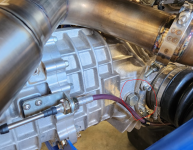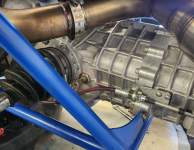- Thread starter
- #101
SeanRitchie
Well-known member
- May 6, 2021
- 447
- 1,020
These get tricky because there are many variations of nosecones used on these MD transaxles, basically whatever that builder had laying around to use at the time they built the trans.Guys, I need help! My 2D has been leaking for a while from what seems like the shift shaft seal at the nose cone. I remember reading it was a simple fix. I'm in the process of pulling the drive train and forgot about this, and really really don't want to re-install it in my new frame without fixing it. Is this a typical over the counter seal from local parts to some old VW?
Edited to add: do I remove the nose cone or can that little donut seal be replaced from the outside?
You might just replace the seal, but if the brass bushings inside the nosecone are worn down allowing the shift shaft to wobble, a new seal won't really fix the leak.
There are now 2 different types of seals for these nosecones. There is the common VW seal, and a Brazilian/Mexico seal on the newer nosecones that will say "Mexico" on them. Best to snap a picture of the seal/nosecone and e-mail it to me, or show to your local shop to get the right one.
If you are going to do it "right", you should replace the brass bushings in the nosecone to tighten up any play in the shift shaft. This requires removing the nosecone from the trans and knocking out the old bushings. This is a bit of a pain in the A$$ unless you have some quality bushing removal tools handy. Once you remove the bushings, you can measure the outside diameter of the bushing to know if you need early or late style bushings. Early bushings have a larger OD, later bushings have a smaller OD (We list these measurements on the parts on our website).




